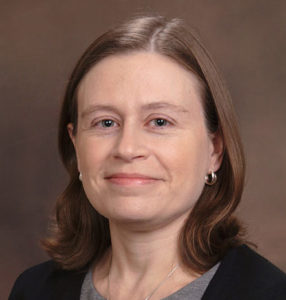Congregations are often broken-hearted when young adults leave church or don’t show up at all.
“Churches in some ways feel rejected by Millennials,” said Laura Stephens-Reed, an Alabama-based clergy and congregational coach.
But they shouldn’t feel alone, she said.
She pointed to new research demonstrating that the banking industry is beset with the same issues churches face in relating to those born roughly between 1980 to 2000.

Laura Stephens-Reed
In an April article titled “4 Ways Banks Can Win and Keep Millennial Customers,” Gallup reported trends that religious groups will find all too familiar.
It said that only 30 percent of that generation is fully engaged with a primary bank.
Millennials in the U.S., Gallup said, “have the lowest levels of customer engagement (only 25% are fully engaged) across multiple industries.”
Plus, younger people are fickle when it comes to their banks, Gallup found, switching institutions at higher rates than other generations.
A related Gallup article added that Millennials are the least likely to visit a branch, preferring instead to use mobile and online banking options.
“Millennial customers are first-generation digital natives,” Gallup said.
Among Millennials, 92 percent are more likely to go online for their banking and 79 percent will use mobile banking options.
“This presents a big challenge for banks, given that in-person branch and drive-thru experiences produce the largest gains in customer engagement,” Gallup said.
Another challenge, the organization said, is that banks aren’t having “the needed ‘big conversations’” with younger customers. Few Millennials reported that banks are helping them reach their financial goals. Others feel banks are not looking out for their financial well-being.
One solution is to consider “face-to-face interactions sacred,” Gallup said.
“The shift to digital banking does not mean the death of brick-and-mortar banks, but rather the increased stakes of face-to-face customer experiences,” the Gallup report said.
That message to banks can also be good news for churches, Stephens-Reed said.
But churches must also follow some of same proposed solutions, she said.
Congregations must place Millennials’ spiritual interests ahead of church membership and revenue growth.
“Millennials don’t care about numbers, they care about people and relationships,” Stephens-Reed said. “Churches must make those relationships a priority.”
And like the banking and other industries, religious organizations must offer meaningful, high quality online and mobile interaction, she said.
“The future is digital,” Stephens-Reed said. “Make sure your web site is up to date, offer online giving and have social media for building community.”
And it’s not a bad idea for churches to consider how generational issues are impacting other parts of society.
“These articles give some ways to build that bridge back with Millennials,” she said.
One of them is Gallup’s suggestion of holding important conversations with Millennials about the challenges they face in life.
“Churches can be proactive in reaching out to Millennials. Don’t just expect them to show up,” she said.
The generations’ aversion to brick-and-mortar banks holds true for churches, too, Stephens-Reed added.
That’s where the digital presence comes in, she said, and it may also mean engaging Millennials off-campus.
“The most important thing is having important conversations,” she said. “Millennials will not engage if those are not being had.”
It’s also important for churches to know they are not alone in struggling with these generational challenges.
“It’s worth telling churches it’s not just you,” she said. “Millennials are skeptical about institutions in general.”


